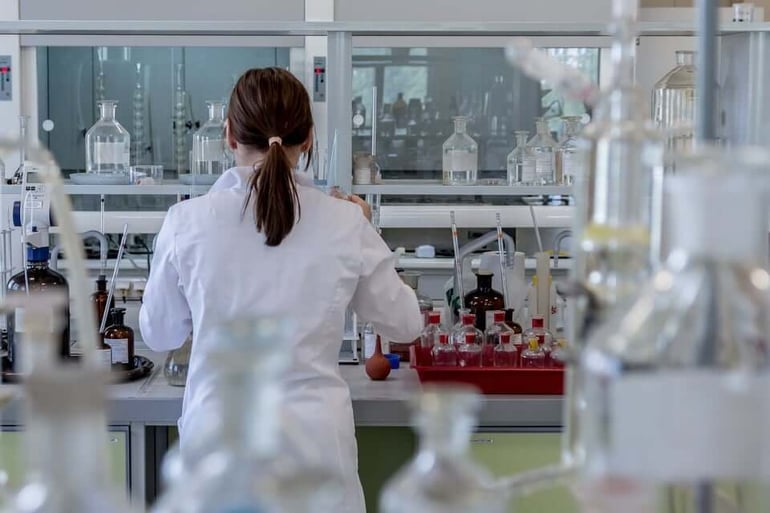In this blog, we explain what a TVC sample is, what the results mean, and when a TVC sample can help inform on water safety…
What is a TVC?
TVC stands for ‘total viable count’, a laboratory test that indicates the level of heterotrophic organisms within a sample. Heterotrophs are a large group of organisms that can be further divided into fungi, yeasts, moulds, and bacteria. Therefore, the results of a TVC test may offer an indication of the ‘general level’ of contamination within a system.
Legionella, Pseudomonas aeruginosa and TVCs
Heterotrophic organisms use organic carbon for propagation and proliferation which supports the rationale for the chosen growth media used in the laboratory – ‘yeast extract agar’. Due to the diverse range of organisms that can be cultured on this type of growth media, these tests are referred to as ‘non-selective’. Conversely, those used for the culture and enumeration of specific pathogenic bacteria such as Pseudomonas aeruginosa and Legionella species require the use of ‘selective media’ and methodology.
These selective methods have been developed to support the growth of the target organism and discourage the growth of ‘non-target’ organisms.
The number of heterotrophic organisms can indicate changes in water quality and as such, the number of these organisms is included in the Water Supply (Water Quality) Regulations as one of many ‘indicator parameters’. The Drinking Water Inspectorate (DWI) guidance on ‘wholesomeness’ that accompanies the Regulations indicates the status of these parameters “If an indicator parameter fails its specified value, water hygiene companies are required to investigate the cause and take any remedial action necessary to ensure that the water supply is not, or does not become, unwholesome.”
What’s the best temperature for a TVC?
TVC samples may be incubated at different temperatures depending on the environment sampled for example; it’s normal to incubate samples from potable water systems at 22˚C or 37˚C. whereas the prescribed method for incubating samples from washer disinfector final rinse waters is 30˚C (following the requirements of HTM 01-06). 30˚C is also the prescribed temperature for samples taken from cooling tower systems (in accordance with ACoP L8, HSG 274 Part 1) because it is the temperature that best represents the favourable growth conditions within these risk systems.
Since 2016 the 37°C test has been dropped from the Water Supply (Water Quality) Regulations list of indicator parameters, primarily aimed at the drinking water supply industry, but the test remains a relevant indicator of water quality in building water systems. The reasoning behind incubating potable water samples at 22 and 37˚C respectively is to delineate between what may be considered environmental contamination and microbiological contaminants of human importance, as we know that the optimal growth temperature for waterborne pathogens such as Legionella pneumophila is 37˚C (body temperature).
At this point, is it reasonable to assume that, due to the non-selective nature of TVC analysis, coupled with the delineation between environmental and what may be contaminants of human importance, TVC tests may be useful indicators for system safety?
Unfortunately, research suggests a poor correlation between the organisms recovered from a TVC test and a selective test used for the identification of pathogens in human health. It’s probable, rather than possible, that should a TVC and selective test be used for the analysis of the same sample, the selective test may very well test negative for the target organism/pathogen whilst the TVC test reports a (general) microbial count.
When should I take a TVC?
This leads us to ‘when’ it may be appropriate to take a TVC, as mentioned above, where TVC testing is advocated by legislation and/or guidance then it would be prudent to follow this for compliance; thus ensuring that duty-of-care responsibilities are suitably discharged and that water system users are adequately protected at the point of care/use (in so far as reasonably practicable).
Let’s consider the merit of undertaking TVC sampling from sampling may help us to understand baseline contamination and therefore allow us to identify any significant deviation from the baseline. When deviations occur, this may trigger further investigation, sampling for ‘selective organisms’ or the commissioning of other water management services; however, this is not indicated as we can’t lose sight of the fact that we ‘monitor’ to prove control and ‘sample’ for a particular reason i.e. control has failed!
Therefore, sampling TVC may be indicated following the identification of taint, taste or odour issues with water, or following the completion of remedial works whereby disinfection has been completed as part of the commissioning process for a system/project.
We should not lose sight of the fact that water utility companies provide mains water in a fit state to consume, as such why would we routinely sample mains cold water? Equally HSG274 part 2 and HTM04:01 do not advocate the routine testing of TVCs, unless in response to a particular reason (as detailed above).
This underpins the importance of a sampling strategy following prescribed guidance so that our approach to water management/safety remains proportionate and sustainable.
If you have questions regarding the issues raised above or you would like to speak with one of our consultants, please click here to get in touch.
Editors Note: The information provided in this blog is correct at the date of original publication - March 2019. (Revised July 2023)
Image by Michal Jarmoluk from Pixabay
© Water Hygiene Centre 2019









